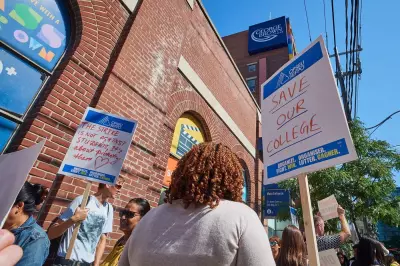
The turmoil disrupting air travel across the United States is set to intensify on Tuesday, as stricter federal flight restrictions come into effect. This escalation occurs even as lawmakers show signs of progress toward ending a lengthy government shutdown.
Deepening Flight Restrictions
The Federal Aviation Administration has now mandated that airlines must reduce their U.S. operations by six per cent during peak hours, from 6 a.m. to 10 p.m. local time. This marks a significant increase from the previous requirement of four per cent.
Data from FlightAware and Cirium revealed that by early Tuesday, approximately 1,159 flights out of 22,811 scheduled—roughly 5.1 per cent—had already been canceled. The situation is projected to deteriorate further, with the FAA's emergency order stipulating reductions must reach eight per cent on Thursday and a substantial ten per cent starting Friday.
Airport Hotspots and Cascading Effects
The disruptions are not evenly distributed. The airports experiencing the highest number of cancellations are Chicago O’Hare International Airport, Hartsfield-Jackson Atlanta International Airport, and New York’s LaGuardia Airport.
These cancellations are creating a domino effect. Dennis Tajer, an American Airlines captain and spokesman for the Allied Pilots Association, explained that canceled flights are preventing cockpit crews from reaching their assignments. This forces airlines to dip into their pools of reserve pilots early. With on-call pilots limited in their flying hours, this could lead to a critical shortage of backup staff around the busy Thanksgiving travel period.
A Glimmer of Hope Amid Ongoing Disruption
There is a nascent sense of optimism in Washington. The Senate has passed a temporary funding measure to end the 41-day government shutdown, with support from eight centrist Democrats. However, the path to normalcy is not immediate.
The funding package must still clear the Republican-controlled House, which is expected to consider it on Wednesday, before it can go to U.S. President Donald Trump for his approval. This timeline means it could be several days before the travel backlog begins to ease, and the impacts of the current disruptions are likely to linger even longer.
Compounding the staffing issues are weather-related challenges. On Monday, nearly 2,100 flights (eight per cent) were canceled, with snow in Chicago worsening the situation. The National Weather Service has warned of potential record-breaking cold and continued lake-effect snow, threatening further complications for an already strained aviation system.





